#joe jackson
Explore tagged Tumblr posts
Text
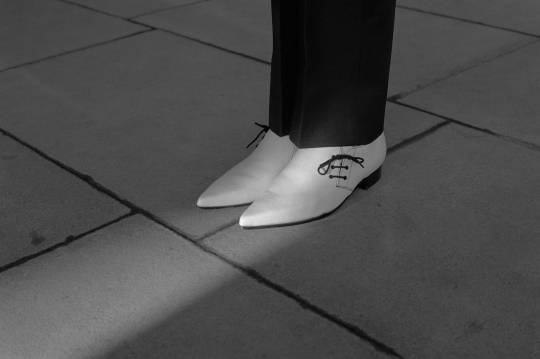
Brian Griffin. Joe Jackson for the album cover of Look Sharp! 1979
157 notes
·
View notes
Text

Night and Day (1982) by Joe Jackson
"Real Men" Take your mind back – I don't know when Sometime when it always seemed To be just us and them Girls that wore pink and boys that wore blue Boys that always grew up better men Than me and you
What's a man now – what's a man mean Is he rough or is he rugged Is he cultural and clean Now it's all change – it's got to change more 'Cause we think it's getting better But nobody's really sure
And so it goes – go round again But now and then we wonder who the real men are
See the nice boys – dancing in pairs Golden earring golden tan Blow-wave in the hair Sure they're all straight – straight as a line All the gays are macho Can't you see the leather shine
You don't want to sound dumb – don't want to offend So don't call me a faggot Not unless you are a friend Then if you're tall and handsome and strong You can wear the uniform and I could play along
And so it goes – go round again But now and then we wonder who the real men are
Time to get scared – time to change plan Don't know how to treat a lady Don't know how to be a man Time to admit – what you call defeat 'Cause there's women running past you now And you just drag your feet
Man makes a gun – Man goes to war Man can kill and man can drink And man can take a whore Kill all the blacks – kill all the reds And if there's war between the sexes Then there'll be no people left
And so it goes – go round again But now and then we wonder who the real men are
#classic#style#gay#art#gay artist#gay songs#joe jackson#real men#gay history#lgbt#lgbt artist#lgbt history
24 notes
·
View notes
Text

The Best Album Cover Shoots – in pictures
From the Beatles crossing a zebra to a naked Prince, via Grace Jones attempting the anatomically impossible and Led Zeppelin’s New York tenements, these cover designs became as famous as the music they enclosed 🎶🎵👏
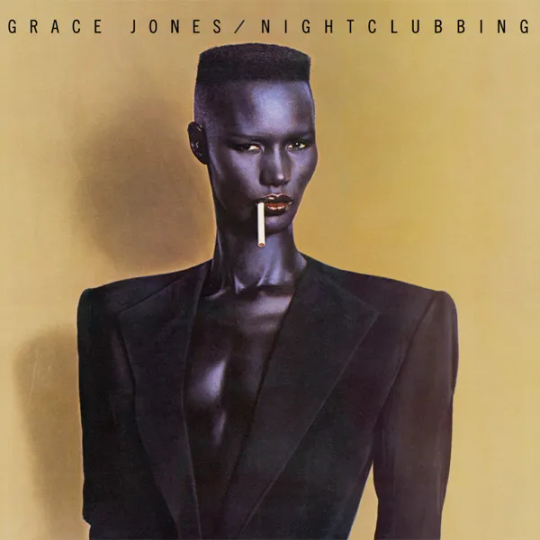
Grace Jones – Nightclubbing, Island Records, 1981, by Jean-Paul Goude
Nightclubbing's iconic artwork is a 1981 painted photograph titled Blue-Black in Black on Brown, created in New York by Goude. This was the singular image that accompanied the original LP, as it "was concealed in a plain, black inner sleeve, no lyrics and with no photo on the back cover." Composed by right angles, the photograph shows Jones cut to waist, bare chested, and dressed in an Armani man's wide shouldered suit, with an unlit cigarette aiming downward from her lip. She is shot with her signature flat top haircut and her chest bones showing; her dark skin confers upon the image a violet, blue-black colour. The image is noted for its androgyny, with Jones not only "[unpicking] some of the boundaries of unconventionality, but [choosing] to confuse such boundaries." Rick Poynor writes: "Goude admired Jones for her mixture of beauty and threat, and the Nightclubbing portrait expresses this duality with absolute composure and no false histrionics." Piers Martin of Uncut felt the cover was "arresting", and wrote: "the indigo mood, cool gaze and cigarette suggested Marlene Dietrich, the gender-bending a touch of Bowie."

Prince – Lovesexy, Paisley Park, 1988, by Jean-Baptiste Mondino (design by Laura LiPuma)
The artwork of Lovesexy sparked as much interest as did the music. Mimicking The Birth of Venus by Botticelli, the cover shows Prince reclined naked with a lily stamen suggestively positioned above his groin. It is an image that captures the LP’s essence of spirituality perfectly. Prince had even denied Warner’s management sight of the cover prior to the album’s retail release. The image was deemed far too risqué for 1988 and prompted many retailers to conceal the artwork under black plastic wrapping (Wal-Mart refusing to stock it at all) or keeping it behind the counter, deeming it too provocative to display in store. It is likely this hindered sales of the album in the more conservative leaning US. The shot is the work of fashion photographer Jean-Baptiste Mondino, Prince’s first choice to direct Under The Cherry Moon but was unavailable. Mondino would instead direct the video Mia Bocca for Jill Jones which led to doing likewise with I Wish U Heaven for Prince. He would also shoot promos for Neneh Cherry (Manchild) and Madonna’s Justify My Love. During a breakfast in LA, Prince asked Mondino if he would shoot the album’s cover. The image was captured in LA, with the lilies and stamen added at Mondino’s studio back in Paris using Paint Box software, a forerunner to Photoshop.
Mondino’s cover is the sole promotional image shot for the album – its back cover and inner sleeves feature the tracklisting and lyrics hand drawn by Margo Chase. With no alternative shots available and keeping with the theme of nakedness, the singles Alphabet St. and Glam Slam were issued without artwork, their transparent sleeves labelled with a sticker. In April 2022 Lovesexy was exhibited at The Photographers’ Gallery in London staged in celebration of the art of iconic album designs.

Boz Scaggs – Middle Man, Columbia, 1980, by Guy Bourdin
Middle Man is the ninth studio album by Boz Scaggs, released by Columbia Records in 1980. Scaggs hired members of the band Toto as session musicians (as he did for Down Two Then Left and Silk Degrees) and shared songwriting credits with them, returning to the commercial, soul-influenced rock of the latter. It would take him eight years to release his following album Other Roads, again retaining the personnel of the three preceding it.
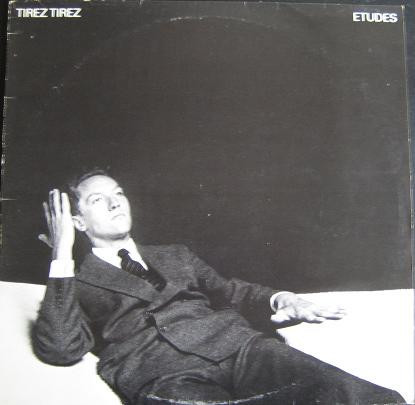
Tirez Tirez – Etudes, Aura, 1980, by Brian Griffin (design by Bill Smith)
Brian Griffin: ‘This photograph was taken in my studio/bedroom at Elsynge Road in Wandsworth [south London] using my bed. The model is Martin Cropper, who I used in my work at the time. It was originally taken for my book Brian Griffin Copyright 1978 and later purchased for the cover by Aaron Sixx of Aura records for Tirez Tirez’.
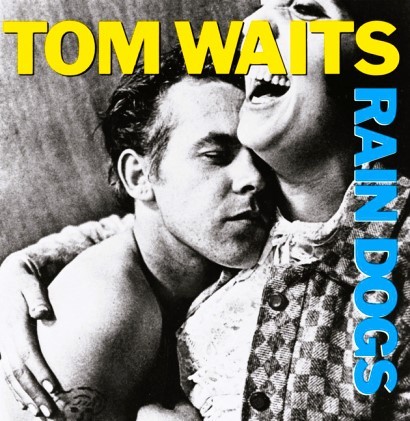
Tom Waits – Rain Dogs, Island Records, 1985, by Anders Petersen
Rain Dogs is the ninth studio album by American singer-songwriter Tom Waits, released in September 1985 on Island Records. A loose concept album about "the urban dispossessed" of New York City, Rain Dogs is generally considered the middle album of a trilogy that includes Swordfishtrombones and Franks Wild Years.
The album, which features guitarists Keith Richards and Marc Ribot, is noted for its broad spectrum of musical styles and genres, described by Arion Berger as merging "outsider influences – socialist decadence by way of Kurt Weill, pre-rock integrity from old dirty blues, the elegiac melancholy of New Orleans funeral brass – into a singularly idiosyncratic American style."
The album peaked at number 29 on the UK charts and number 188 on the US Billboard Top 200. Rod Stewart had success with his cover of "Downtown Train", later included on some editions of his 1991 album Vagabond Heart. In 1989, it was ranked number 21 on the Rolling Stone list of the "100 greatest albums of the 1980s." In 2012, the album was ranked number 399 on the magazine's list of "The 500 Greatest Albums of All Time", and at number 357 in 2020.
Though it has been remarked that the man on the cover bears a striking resemblance to Waits, the photograph is actually one of a series taken by the Swedish photographer Anders Petersen at Café Lehmitz (a café near the Hamburg red-light boulevard Reeperbahn) in the late 1960s. The man and woman depicted on the cover are called Rose and Lilly.
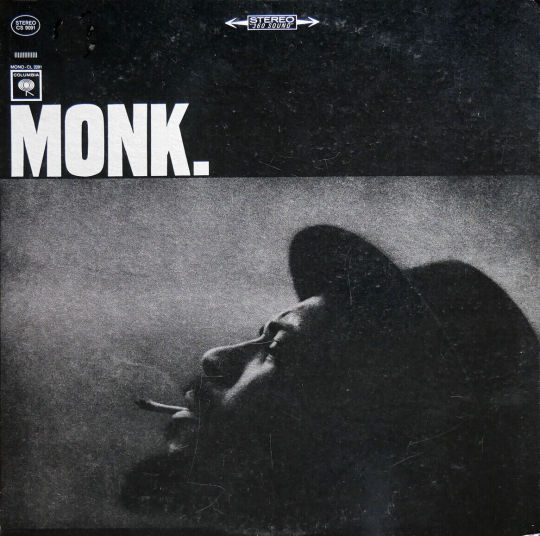
Thelonious Monk – Monk, Columbia, 1964, by W Eugene Smith
Monk. (1964) is the fourth studio album Thelonious Monk released on Columbia Records, and his seventh album overall for that label. It features two original compositions and several jazz standards.
The track "Pannonica" is a tribute to the jazz patron Pannonica de Koenigswarter. The track "Teo" is a tribute to the album's producer Teo Macero.
The album cover is a photo of Monk taken by W. Eugene Smith in 1959. Between 1957 and 1965, Monk and other prominent New York jazz musicians rehearsed at the photographer's home, nicknamed 'The Jazz Loft'.
Photographer and photojournalist W Eugene Smith demanded such perfection of his images that he destroyed most of his early work. He had a vast career and helped define photojournalism through his work at Life magazine, before joining Magnum Photos in 1955. He is remembered as a master both technically and in the darkroom. This photograph is titled Thelonious Monk Rehearsing in the Loft, 1959.
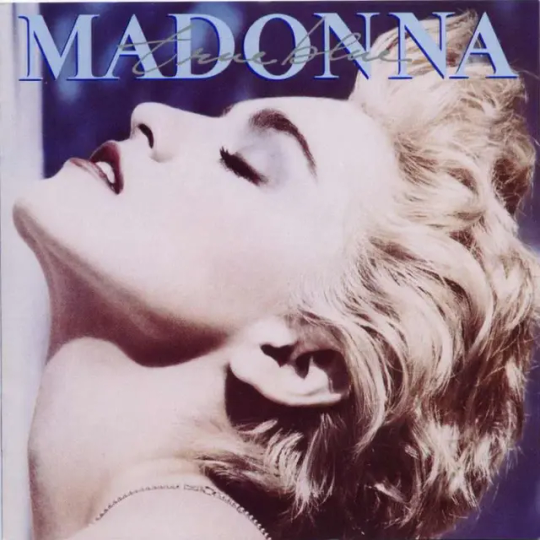
Madonna – True Blue, Sire/Warner, 1986, by Herb Ritts
The album cover was shot by photographer Herb Ritts. It shows Madonna in profile, with her head thrown back and eyes closed against a sky-blue background; her skin is bleached-out, and her hair platinum blonde. Jeri Heiden, who was working at the Warner Bros. art department, was given the task of editing the photos to adapt them into record covers. The final photo was selected by Madonna, Heiden and Jeff Ayeroff, creative director of Warner Bros. at that time. After the image was chosen, Heiden experimented with a variety of treatments of the original, which was shot in black and white, to go along with the album's title, and finally arrived at the final, blue toned, hand tinted version. The album's inner sleeve did not feature any photographs, and instead was dedicated to album credits and song lyrics, since Madonna wanted to be represented by her work rather than her image.
Lucy O'Brien described the cover as a "moment of Warholian pop art. A mixture of innocence [and] idealism […] Our first glimpse of Madonna as a classic icon". For J. Randy Taraborrelli, author of Madonna: An Intimate Biography, the artwork indicated how "[True Blue] was a vehicle of growth for [Madonna]"; the "washed out color photograph" cover was "understated", especially when compared to the "sexier poses" she had been associated with in the past. For Joe Lynch from Billboard, it is one of the greatest album covers of all time.
True Blue was released on June 30, 1986. In the United States and Canada, the cover did not include the singer's name. Heiden explained in an interview with Aperture magazine that the record company thought it would be "cool" to use a shrink wrap on American releases, so that when the public took it off, they'd be left with the photograph of Madonna. In Europe, Warner felt that the name was needed, as they did not want to risk messing with Madonna's popularity. The back sleeve and booklet feature the song titles in Heiden's own handwriting. About cropping the image for the cassette and vinyl releases, Heiden said: "I think the image became more interesting cropped into a square—and at that time we always started with the album cover configuration. It was like she was floating—her clothing was not visible. She took on the appearance of a marble statue—Goddess like. In the vertical cropping you see her leather jacket and the wall, and it becomes more typical, editorial, earthly". On May 22, 2001, Warner Bros. released a remastered edition of the album with two additional remixes of "True Blue" and "La Isla Bonita". Twenty years later, a 35th anniversary edition was released; it includes additional remixes, dub and instrumental versions. It was reissued on crystal clear vinyl on November 8, 2019.
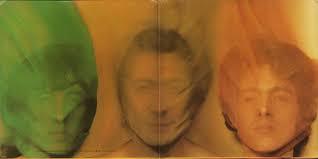
The Rolling Stones – Goats Heads Soup, The Rolling Stones Records, 1973, by David Bailey (design by Ray Lawrence)
Goats Head Soup is the eleventh studio album by the English rock band the Rolling Stones, released on 31 August 1973 by Rolling Stones Records. Like its predecessor Exile on Main St., the band composed and recorded much of it outside of the United Kingdom due to their status as tax exiles. Goats Head Soup was recorded in Jamaica, the United States and the United Kingdom. The album contains 10 tracks, including the lead single "Angie" which went to number one as a single in the US and the top five in the UK.
The album cover was designed by Ray Lawrence and photographed by David Bailey, a friend of Jagger's who had worked with the Rolling Stones since 1964. The portrait of Jagger on the front cover was approximately life size in the original 12-inch LP format. Jagger was reluctant to be shot enveloped by a pink chiffon veil, which Bailey said was meant to look like "Katharine Hepburn in The African Queen". The album's gatefold has Taylor, Wyman and Watts wrapped in a similar fabric, and Richards on the back. The album's original rejected cover art featured the entire band as centaurs and an image of goat's head soup, a Jamaican dish made from a goat's body parts, such as the head, feet and testicles.
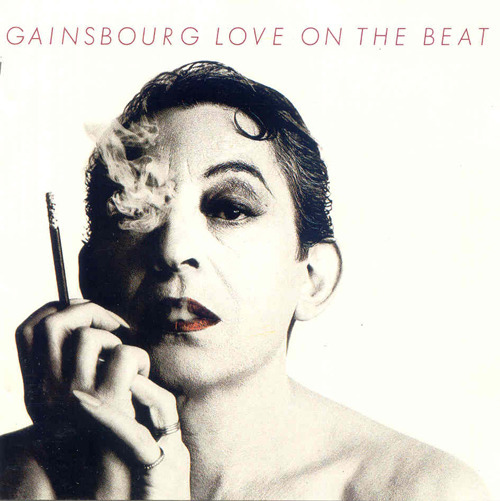
Serge Gainsbourg – Love on the Beat, Philips, 1984, by William Klein
Love on the Beat is the fifteenth studio album by French singer and songwriter Serge Gainsbourg. On this album, Gainsbourg used American musicians to achieve a funk-heavy rock sound. The album was controversial due to its very sexual lyrical content, with homosexuality and prostitution as the subject matters on many of the tracks. Perhaps the most controversial was "Lemon Incest", which was set to Frédéric Chopin's Étude No. 3 and sung as a duet with his then-13-year-old daughter Charlotte Gainsbourg.
French singer Serge Gainsbourg dressed in drag for the cover of Love on the Beat. Gainsbourg gave up alcohol for 12 days ahead of the shoot with legendary photographer William Klein to make himself beautiful.

Grace Jones – Island Life, Island Records, 1985, by Jean-Paul Goude (design by Greg Porto)
Island Life is the first greatest hits album by Jamaican singer and songwriter Grace Jones, released in December 1985, summing up the first nine years of her musical career. The album sits among Jones' best-selling works.
The cover picture is one of the most famous images of Grace Jones and was created by her then-partner Jean-Paul Goude. The impossibly graceful arabesque is actually a montage of separate images, following Goude's ideas on creating credible illusions with his cut-and-paint technique. The body position is "anatomically unlikely".
Jones assigned her then partner, Jean-Paul Goude, to create this cover image for Island Life. In what has become an iconic portrait, Goude compiled several separate snaps of Jones and constructed this lissom and elegant, if anatomically dubious, pose, all before Photoshop existed. ‘Unless you are extraordinarily supple, you cannot do this arabesque,’ Goude has said. ‘The main point is that Grace couldn’t do it, and that’s the basis of my entire work: creating a credible illusion’.
The picture was originally published in New York magazine in 1978 and subsequently used in the music video for Jones' hit single "La Vie en rose". It has been since described as "one of pop culture's most famous photographs". Also included in the album sleeve are other iconic images of Jones, among them the "twins" photograph, Grace Jones in a cage and wearing a "maternity" dress.
The cover picture was featured in Michael Ochs' 1996 book 1000 Record Covers and has been often imitated in works by other artists. The image was also referenced in Nicki Minaj's 2011 music video for "Stupid Hoe", with Minaj mimicking the pose.

Joe Jackson – Look Sharp!, A&M, 1979, by Brian Griffin (design by Michael Ross)
Look Sharp! is the debut album by Joe Jackson, released in January 1979. The album features one of Jackson's most well-known songs, "Is She Really Going Out with Him?", as well as the title track "Look Sharp", "Sunday Papers", "One More Time" and "Fools in Love".
The cover, featuring a pair of white shoes, ranked number 22 on Rolling Stone's list of the 100 greatest album covers of all time.
In 2000, it was voted number 865 in Colin Larkin's All Time Top 1000 Albums.
The photo used on the album's cover was shot by Brian Griffin on London's South Bank, near London Waterloo station. Upon arriving at the South Bank, Griffin noticed a shaft of light landing on the ground and asked Jackson to stand there: the whole process took no more than five minutes. According to Griffin, Jackson hated the record sleeve as it did not include his face, and vowed never to work with Griffin again. Nonetheless, the album artwork became one of the nominees for the 1980 Grammy Award for Best Recording Package.
Some observers didn't understand the tongue-in-cheek nature of Jackson's choice of title and cover art—an early reviewer in New Musical Express said they "suggest an obsession with style" and sniffed that Jackson sported "a pair of white side-lace Denson winklepickers that are, unfortunately, not nearly as cool as he evidently thinks they are". As time went on, journalists became more familiar with his youthful lack of interest in fashion, and The Face noted how most agreed with the general summation of him as a "sartorial disaster area".
Brian Griffin: ‘This was shot on London’s South Bank, which you could say was my open-air studio, as I did not have a studio then. I fell in love with the quality of light that pervaded there. It was the fastest album cover shoot that I ever did, maybe it took four minutes. I saw this patch of light making a pattern on the paving and said to Joe: “Stand there!”’

Diana Ross – Silk Electric, RCA, 1982, by Andy Warhol (photograph and design)
Silk Electric is the thirteenth studio album by American R&B singer Diana Ross, released on September 10, 1982, by RCA Records. It was Ross' second of six albums released by the label during the decade. It reached No. 27 on the US Billboard 200 (No. 5 R&B), No. 33 in the UK Albums Chart and the Top 20 in Sweden, Norway and the Netherlands. The album cover was designed by Andy Warhol.
The album contains Ross' US Top 10, Grammy-nominated single, "Muscles", which was written and produced by Michael Jackson. All other tracks were produced by Ross, including the US Top 40 follow-up single "So Close" featuring prominent background vocal arrangements by Luther Vandross.
The song "In Your Arms", written by Linda Creed and Michael Masser, was covered by Teddy Pendergrass and Whitney Houston as "Hold Me" the following year. The song "I Am Me" was co-written by Ross (and incorrectly listed as co-written by Cindy Birdsong instead of Janie Bradford on the Greatest Hits: The RCA Years compilation album). The album was certified Gold in the US and Silver in the UK.
The album was remastered and re-released on September 2, 2014 by Funky Town Grooves as an "Expanded Edition", with bonus material.
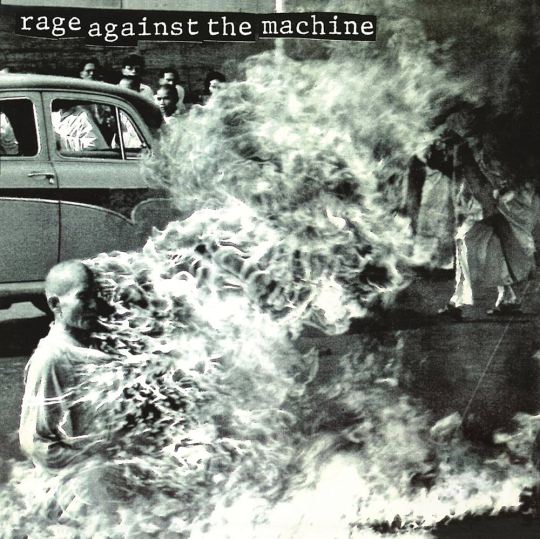
Rage Against the Machine – Rage Against the Machine, Epic, 1992, by Malcolm Browne
Rage Against the Machine is the debut studio album by American rock band Rage Against the Machine. It was released on November 6, 1992, by Epic Records, four days after the release of the album's first single, "Killing in the Name". The album was based largely on the band's first commercial demo tape of the same name, completed 11 months prior to the album's release. The tape contained earlier recordings of seven of the ten songs.
The cover features a crop of Malcolm Browne's famous photograph of the self-immolation of Thích Quảng Đức, a Vietnamese Buddhist monk, in Saigon in 1963. The monk was protesting against President Ngô Đình Diệm’s administration for oppressing the Buddhist religion. In 1963, Browne’s photography and coverage of the event earned him the World Press Photo of the Year award.
The songs on Rage Against the Machine all feature political messages. Activists such as Provisional IRA hunger striker Bobby Sands and Black Panther Party founder Huey P. Newton are listed in the "Thanks For Inspiration" section. Also thanked were Ian and Alec MacKaye.
The lyrics for each song were printed in the album booklet with the exception of those for "Killing in the Name", which were omitted; the booklet reads "2. KILLING IN THE NAME", skips the lyrics and continues with the next song.
The statement "no samples, keyboards or synthesizers used in the making of this record" can be found at the end of the sleeve notes. Similar statements were made in the band's subsequent albums. The band also refer to themselves as "Guilty Parties" for each album.
The album was a critical success upon release, with several critics noting the album's politically motivated agenda and praising frontman Zack de la Rocha's strong vocal delivery. Ranked number 24 on Rolling Stone's list of the "100 Greatest Metal Albums of All Time", the album peaked at number 1 on the US Billboard Heatseekers chart and number 45 on the US Billboard 200 and has gone on to achieve a triple platinum sales certification from the Recording Industry Association of America (RIAA) in the US. Multiple publications have ranked it as one of the best albums of the 1990s. In 2020, it was ranked 221 in Rolling Stone's updated list of the "500 Greatest Albums of All Time".

The Beatles – Abbey Road, Apple, 1969, by Iain Macmillan (design by John Kosh)
Abbey Road is the eleventh studio album by the English rock band the Beatles, released on 26 September 1969, by Apple Records. It is the last album the group recorded, although Let It Be (1970) was the last album completed before the band's break-up in April 1970. It was mostly recorded in April, July, and August 1969, and topped the record charts in both the United States and the United Kingdom. A double A-side single from the album, "Something" / "Come Together", was released in October, which also topped the charts in the US.
Apple Records creative director Kosh designed the album cover. It is the only original UK Beatles album sleeve to show neither the artist name nor the album title on its front cover, which was Kosh's idea, despite EMI saying the record would not sell without this information. He later explained that "we didn't need to write the band's name on the cover […] They were the most famous band in the world". The front cover was a photograph of the group walking on a zebra crossing, based on ideas that McCartney sketched, and taken on 8 August 1969 outside EMI Studios on Abbey Road. At 11:35 that morning, photographer Iain Macmillan was given only ten minutes to take the photo while he stood on a step-ladder and a policeman held up traffic behind the camera. Macmillan took six photographs, which McCartney examined with a magnifying glass before deciding which would be used on the album sleeve.
In the image selected by McCartney, the group walk across the street in single file from left to right, with Lennon leading, followed by Starr, McCartney and Harrison. McCartney is barefoot and out of step with the others. Except for Harrison, the group are wearing suits designed by Tommy Nutter. A white Volkswagen Beetle is to the left of the picture, parked next to the zebra crossing, which belonged to one of the people living in the block of flats across from the recording studio. After the album was released, the number plate (LMW 281F) was repeatedly stolen from the car. In 2004, news sources published a claim made by retired American salesman Paul Cole that he was the man standing on the pavement to the right of the picture.
Although Abbey Road was an instant commercial success, it received mixed reviews upon release. Some critics found its music inauthentic and criticised the production's artificial effects. By contrast, critics today view the album as one of the Beatles' best and one of the greatest albums of all time. George Harrison's two songs on the album, "Something" and "Here Comes the Sun", are considered among the best he wrote for the group. The album's cover, featuring the Beatles walking across the zebra crossing outside of Abbey Road Studios (then officially named EMI Studios), is one of the most famous and imitated of all time.

Graham Parker and the Rumour – The Parkerilla, Mercury, 1978, by Brian Griffin (design by Barney Bubbles)
The Parkerilla is a 1978 live double album by Graham Parker and The Rumour. It was recorded at Winter Gardens, Bournemouth, Manchester Opera House, Apollo Theatre, Oxford and The Palladium, New York City; and mixed at Rockfield Studios, Wales.
The album was recorded as a contractual obligation album as Parker had already signed with Arista and was preparing "Squeezing Out Sparks" for that label. The album was longer than a traditional record and Mercury elected to release it as a double album. The single "Hey Lord Don't Ask Me Questions" was a re-recording of a song from the first album (and slightly retitled) with the song occupying the fourth side.
The album met with a mixed reception from critics who were waiting for new material from Parker.
In 1991, Rolling Stone ranked The Parkerilla number 64 on its list of 100 greatest album covers. The cover photography was by Brian Griffin, with the artwork completed by Barney Bubbles.
Brian Griffin: ‘Dave Robinson of Stiff Records commissioned me for this. It was my first album cover and was shot on the South Bank in London next to the Hayward Gallery. The idea to make Graham Parker look like a gorilla was Dave’s, using prosthetics. This album was also my introduction to Barney Bubbles, who designed the cover’.

Led Zeppelin – Physical Grafitti, Swan Song, 1975, by Elliott Erwitt (design by AGI/Mike Doud/Peter Corriston)
Physical Graffiti is the sixth album by the English rock band Led Zeppelin. Released as a double album on 24 February 1975 in the United States and on 28 February 1975 in the United Kingdom, it was the group's first album to be released under their new label, Swan Song Records. The band wrote and recorded eight new songs for the album in early 1974 at Headley Grange, a country house in Hampshire, which gave them ample time to improvise arrangements and experiment with recording. The total playing time covered just under three sides of an LP, so they decided to expand it into a double album by including previously unreleased tracks from the sessions for the band's earlier albums Led Zeppelin III (1970), Led Zeppelin IV (1971) and Houses of the Holy (1973). The album covered a range of styles including hard rock, progressive rock, rock 'n' roll and folk. The album was then mixed over summer 1974 and planned for an end-of-year release; however, its release was delayed because the Peter Corriston-designed die-cut album cover proved difficult to manufacture.
The album was originally released with a die-cut sleeve design depicting a New York City tenement block, through whose windows various cultural icons could be interchangeably viewed. The album designer, Peter Corriston, was looking for a building that was symmetrical with interesting details, that was not obstructed by other objects and would fit the square album cover. He subsequently came up with the rest of the cover based on the idea of people moving in and out of the tenement, with various sleeves that could be placed under the main cover and filling the windows with various pieces of information.
The two five-storey buildings photographed for the album cover are located at 96 and 98 St. Mark's Place in New York City. The original photograph underwent a number of tweaks to arrive at the final image. The fourth floor of the building had to be cropped out to fit the square album cover format. (The front doorway and stoop at 96 St. Mark's Place is also the location used by the Rolling Stones for the music video promoting their single "Waiting on a Friend", from their 1981 album Tattoo You).
Eschewing the usual gatefold design in favour of a special die-cut cover, the original album jacket included four covers made up of two inners (for each disc), a middle insert cover and an outer cover. The middle insert cover is white and details all the album track listings and recording information. The outer cover has die-cut windows on the building, so when the middle cover is wrapped around the inner covers and slid into the outer cover, the title of the album is shown on the front cover, spelling out the name "Physical Graffiti". Images in the windows touched upon a set of American icons and a range of Hollywood ephemera. Pictures of W. C. Fields and Buzz Aldrin alternated with the snapshots of Led Zeppelin. Photographs of Lee Harvey Oswald, Marcel Duchamp and Pope Leo XIII are also featured. Per the liner notes, package concept and design was by AGI/Mike Doud (London) and Peter Corriston (New York). Photography was by Elliott Erwitt, B. P. Fallon, and Roy Harper. "Tinting Extraordinaire": Maurice Tate, and window illustration by Dave Heffernan. In 1976, the album was nominated for a Grammy Award in the category of best album package.
Physical Graffiti was commercially and critically successful upon its release and debuted at number one on album charts in the UK and number three in the United States. It was promoted by a successful U.S. tour and a five-night residency at Earl's Court, London. The album has been reissued on CD several times, including an expansive 40th anniversary edition in 2015. Physical Graffiti was later certified 16× platinum in the United States by the Recording Industry Association of America (RIAA) in 2006, signifying shipments of over eight million copies in the US.
Daily inspiration. Discover more photos at Just for Books…?
#just for books#Best Album Cover Shoots#Grace Jones#Prince#Boz Scaggs#Tirez Tirez#Tom Waits#Thelonious Monk#Madonna#The Rolling Stones#Serge Gainsbourg#Joe Jackson#Diana Ross#Rage Against the Machine#The Beatles#Graham Parker and the Rumour#Led Zeppelin
25 notes
·
View notes
Text

#sing street#movies#new wave#new romantic#duran duran#the cure#the jam#joe jackson#daryl hall#john oates#80s
18 notes
·
View notes
Video
youtube
(via Geraldine And John - Joe Jackson (1979)
13 notes
·
View notes
Video
youtube
You Can't Get What You Want (Till You Know What You Want) (Official Musi...
10 notes
·
View notes
Text
School Spirits Season 2 Episode 6
Spoilers below - some thoughts re plotline, character development, and music choices; focus on Wally and Charley
I've been sitting on some strong feelings ever since I watched this episode. Season 2 has been absolute perfection up until this point, and I think the quickest way to sum up how I feel about 2.6 is that it was largely a filler episode. And that's okay! I also haven't seen others throw out any feelings about it, so I have decided to contribute to this smol, strong, but growing fandom.
OK then - context: I absolutely adore Charley and Wally's friendship. I think it has huge potential as a romantic thing, and I think it's pretty much canon that they slept together (i.e. Rhonda's comment in season 1 about being eternal teens - the core group has definitely all had experiences of some kind with one another). And I could go on and on about how it was the sweetest and tenderest thing. But that would derail the purpose of this post.
It's also felt clear to me from the get go that Wally has been unlearning 1980s jock-mentality homophobia stuff since he arrived in the afterlife. He is Charley's absolute wingman, they banter like an old married couple, there's casual physical touch - they are besties at the very least. That doesn't happen without serious unlearning.
Also, Wally's connection to dancing has felt like something he claimed for himself amidst the rest of the expectations he was fulfilling for others. And I don't want to reduce a love of creative arts as being inherent to queerness but there sure is a trope of pitting the sport people versus the non sport people and it's usually pretty gay. I mean, even in the year of our lord twenty twenty five as a bisexual I've gotten weird comments about not being into sports and being told "oh you're one of those?" But I digress...
As layered and beautiful as a show as School Spirits has been, tropes are still very relevant because season 2 episode 6 decided to reduce Wally to 1980s homophobic jock, "product of his time." After an opening montage of a Wally choreographed dance routine to David Bowie's Let's Dance (A VERY OPENLY QUEER MUSICIAN MIGHT I ADD!!!!), Charley was shocked to learn that Wally did nothing as his teammates tossed a (closeted) queer kid into a dumpster. Though Wally doesn't even recognize the victim at first, he then says it was "just a teambuilding exercise". Charley shrugs it off and continues to spend the rest of his time at the class of 84 reunion party awkwardly talking with Yuri. It's clear the interaction with Wally threw him off, and the same can be said about Wally whose entire body language has also changed. Charley ends up feeling suffocated by the situation with Yuri and runs out to the picnic area (mirroring Wally after the homecoming dance with Maddie didn't initially pan out the way he would have liked in season 1).
The scene then first changes to Maddie entering Rhonda's scar. And we hear about 30 seconds of the 40th anniversary version of "Smalltown Boy" by Bronski Beat - A VERY QUEER SONG BY A VERY QUEER BAND - used in a context not at all related to the meaning of the song. And I was shocked because this show is usually very good at choosing songs that match the plot. Now, "Smalltown Boy" did also recently go viral again due to a TikTok trend ("Show me what you danced to and how at my age" or something like that), but I'm surprised the history of the band and song did not accompany that. I discovered the track while reading "David Bowie Made Me Gay: 100 Years of LGBT Music" for my thesis (The Intersection of Punk Music & Queer Identity) back in 2019. Please watch the original music video - it speaks for itself. There was so much potential for this song to be used differently than it was.
So then we have, Wally's apology. Which would've been an opportunity to flesh out this sudden bullying backstory in a meaningful way. There's potential to add the internalized homophobia on Wally's part. Even if we're not queer ourselves, the same systems of oppression harm us all. But it sums up as "yeah, I was a bully, I'm sorry."/wouldn't have helped you then but I would now. Then it's Charley who brings up how he "already called [himself] everything [Wally] could've" at the time, as a defense. Which isn't unrealistic but I didn't like how they're equating Wally and Charley's responses to the system of homophobia as equally problematic.
DESPITE THAT - I felt the camera suddenly remembered to acknowledge their 30 years of friendship when Wally tells Charley "You know I love you." and Charley returns the sentiment - each of them in tears.
With that, let me rewrite this sequence of events and music choices in a way that would've made more sense to me. First of all, the conversation that we see about Wally's past behavior definitely had to have happened sometime in the last 30 years. But, for the benefit of a doubt, let's say Wally was just never explicit about the kind of stuff that happened as a result of shame so the comment at this reunion was the first time Charley got a solid picture of the behavior. On top of it, the date with Yuri doesn't go great.
The camera has just established that for 40 years Wally has made his friend group do a dance routine to Let's Dance by David Bowie. (Side note, even his favorite musician (Joe Jackson) has a song about unpacking toxic masculinity and it's off the same album as Steppin Out). When he's flipping through the records earlier he has a solid knowledge of the picks.
Now, let's reimagine the picnic table scene.
Instead of just an empty apology, Wally walks up to Charley holding the vinyl for Bronski Beat's "The Age of Consent", which features the hit song "Smalltown Boy". Wally tells the story of hearing it for the first time and how much it spoke to him.
Mother will never understand why you had to leave...but you never cried to them - just to your soul.
Wally knew that everything he was doing was just to make his mother proud, but it wasn't him. Football isn't him, the team wasn't him.
"But it's not about me Charley, it's not for me."
Instead of being brushed off as a product of his time, Wally comforts his best friend with the knowledge that queer history, queer music was always around. Queer voices were always around. And then they rejoin Yuri on the dance floor - the perfect song for Charley and Yuri's dance has been found.
SO! Yeah that's my rant. :) Golden retriever himbo jock deserved so much better than that.

#school spirits spoilers#school spirits#wally clark#charley#charley school spirits#milo manheim#nick pugliese#music#bronski beat#smalltown boy#let's dance#david bowie#long post#queer#lgbt#steppin out#joe jackson#real men
7 notes
·
View notes
Text

My 2025 blessings. Still shocked that I managed to find them. Way better than those Shein hauls ain't it ?
#gotta tag this.. soz..#the jam#paul weller#sex pistols#joe jackson#xtc band#andy partridge#xtc#zz top#johnny rotten
19 notes
·
View notes
Text
Music: Is She Really Going Out With Him? By Joe Jackson
#buster keaton#comedy#silent movies#1920s#silent film#silent comedy#joe jackson#1920s cinema#golden age of hollywood#hollywood#slapstick#sybil seely#marceline day#margaret leahy#wallace beery#joe roberts#ward crane#harold goodwin
120 notes
·
View notes
Video
youtube
Anthrax - Got The Time (Joe Jackson cover)
15 notes
·
View notes
Text
youtube
Steppin’ Out
Joe Jackson
We
So tired of all the darkness in our lives
With no more angry words to say
Can come alive
Get into a car and drive
To the other side
15 notes
·
View notes
Text

Happy 70th, Joe Jackson.
13 notes
·
View notes
Video
youtube
(via Look Sharp! - Joe Jackson (1979)
28 notes
·
View notes


